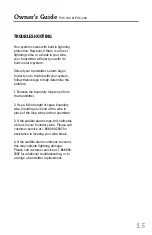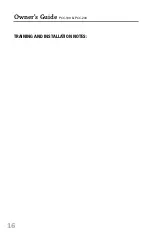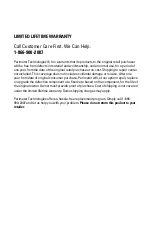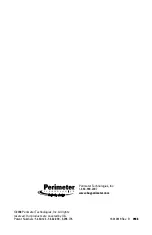
13
Owner’s Guide
PCC-100 & PCC-200
Should your
dog not appear
to have felt
the collar cor-
rection, check
to ensure the
collar is making
contact with
the skin. It may
be necessary to use one of the longer
metal contacts provided for dogs with a
dense coat.
LESSON 3
Distractions
If your dog is avoiding the boundary at
multiple locations around your boundary,
you are ready to add more tempting dis-
tractions. Remember, never pull or coax
your dog into the boundary area.
This lesson teaches your dog that he must
resist all temptations to leave the yard.
You can’t assume that if your dog won’t
chase a ball out of the yard,
He won’t chase a bicycle.
Or favorite neighbor.
Your training has been successful at this
point if your dog has resisted the urge
to cross the boundary on leash with any
distraction you can dream up.
LESSON 4
Off Lead With Supervision
After several sessions of distractions,
your dog should be ready for off leash
play. You must stay in the yard for off leash
training.
The more your dog stays on the property
for the fi rst month, the less chance of your
dog ever attempting to leave the area.
Continue to supervise and play with your
dog outside for a period of one week.
Should your dog bolt out of the property
for any reason during this phase, retrace
your last training steps with distractions
with your dog on a leash.
LESSON 5
Off Lead Unsupervised
When your dog resists all manner of
distractions, both on and off the leash, he
can be left unattended in the yard.
Keep a close eye on your dog for two
weeks from inside the house. This
freedom should be brief at fi rst and the
amount of time increased gradually.
Before and after each unsupervised
session, you must continue the play and
praise routine to reinforce that the yard is
a happy, fun and safe place to be.






































